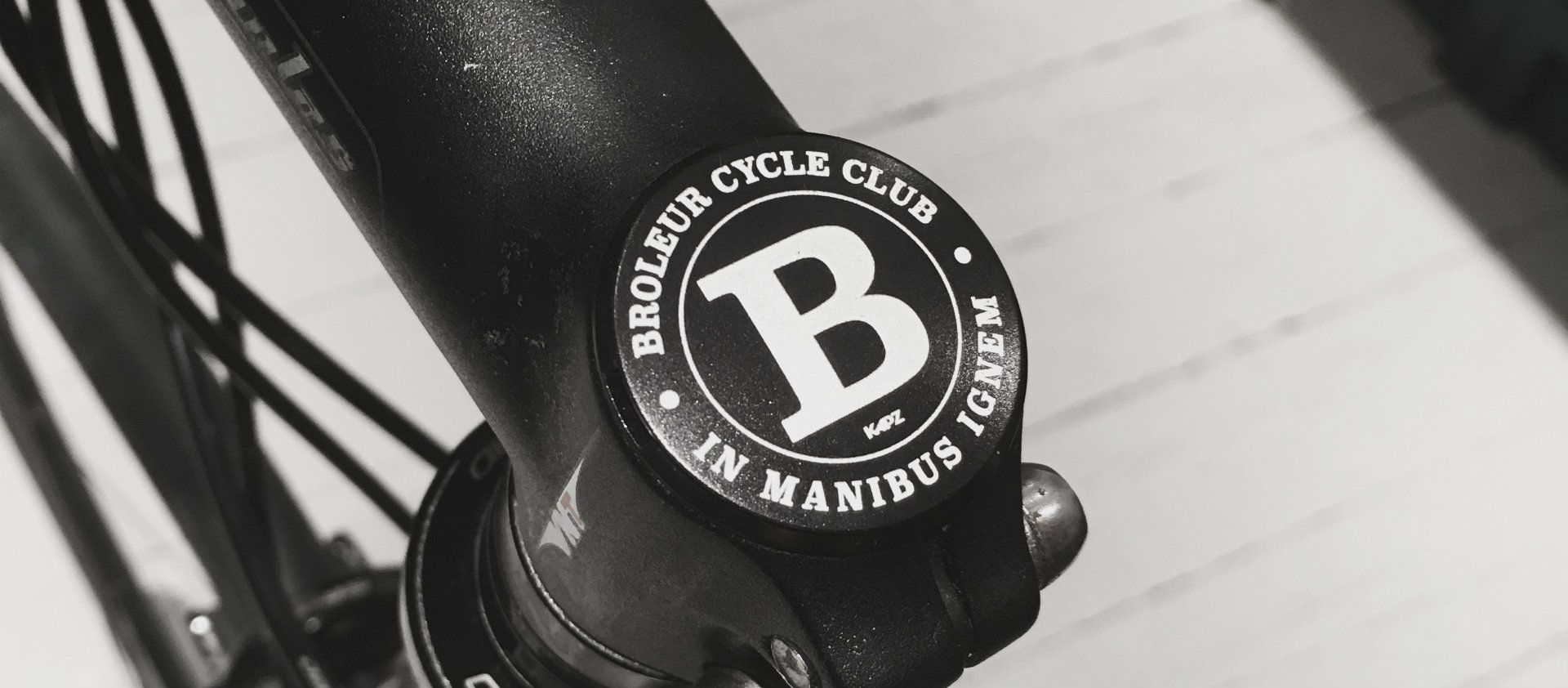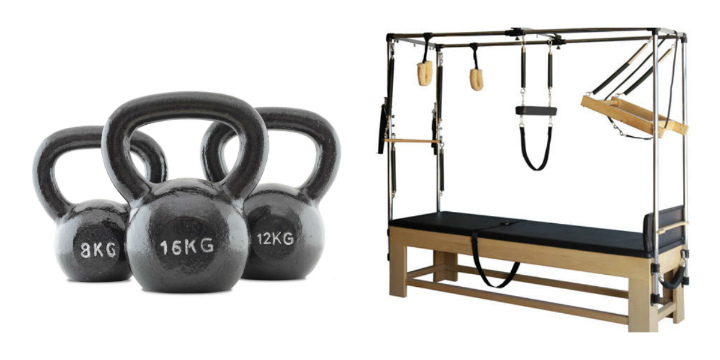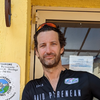Top 15 cycling training tips for beginners
When you begin to take cycling semi-seriously i.e. you actually want to get better at it, it's easy to get overwhelmed by all the advice thrown your way. Here are 15 tips so you can train smarter, before you have to resort to training harder.

Here's the good news. You don't need to sacrifice yourself on the altar of elite performance. It's not necessary to devote divorce-worthy hours. It's absolutely possible to make major gains with relatively marginal changes to your weekly routine. You can change your diet without being on a diet. And you can still drink beer.
If you're relatively new to cycling we'll give you a Cast Iron Guarantee. Follow all of these suggestions religiously and you'll be riding 20 percent faster within 6 months (assuming you're not very good at the moment). Even a seasoned Sunday rider who does the odd sportive should be able to make a 10 percent improvement. If you already know your power to weight ratio, sprinkle chia seeds and goji berries on your porridge, or refer to your training rides as "adaptations", this blog is probably not for you.
First principles
Getting better at cycling - which on the road at least, means going faster, for longer - requires a basic understanding of physics. Your speed (particularly uphill) depends mostly on your power (measured in watts), your weight (measured in kilos) and the resistance you create moving through the air. The more watts you generate per kilo (W/kg), the faster you'll go. However the faster you go, the harder you have to work to overcome drag. (If you really want to delve into the science, take a look at our Hill Climb Calculator). Then it's about increasing your stamina, so you can maintain power over a longer distance/duration. Simple.
Before you start: find your broleur
Riding solo has its merits. It provides an opportunity to concentrate or contemplate. A welcome break from a screaming toddler or a distraction from the demands of work. But if you're going to derive full satisfaction from your inevitable performance improvement, you're going to need a broleur (whether male/female/would rather not say). Someone to share your pain, listen to you drone on and on about tedious stuff like power zones and most importantly, someone to marvel at your gains. It obviously helps if they're as hopelessly hooked on riding bikes as you.
Don't have any friends? Not a problem. You're very welcome to join our very welcoming Strava club.

1. Pedal faster
Well that's bleedin' obvious, isn't it? Not quite. This isn't about pushing down harder, it's about increasing your cadence: the number of revolutions per minute (rpm). Spinning is winning. Pro cyclists typically maintain a cadence of 100+ rpm - and not just because they're doped up to the eyeballs on amphet. Around 85 rpm is considered about right for a rank amateur. Pedalling faster means you don't have to put as much energy into each stroke, which reduces the burden on your leg muscles. It does mean you might lose breath or find your heart rate increasing, but those muscles can recover quicker than your legs.
How to monitor your cadence? Well, you could pedal in time to Rihanna's Umbrella, or the Beatles Come Together - both play at 85 bpm - or you might consider buying a basic cadence sensor, available in all good local bike shops for around £30.
2. Get down low (go aero)
Fascinating fact: once you get up to a speed of 20 mph on the flat (around 32 kph), about 85% of your effort goes into overcoming air resistance. Making yourself smaller makes a massive difference. Some cyclists like to "slam their stem" - removing spacers so their handlebars sit as low as possible. Don't bother, you'll just give yourself back ache. Forget about shaving your legs, affixing aero bars or wearing one of those helmets that make you look like a character out of Spaceballs. For the moment, just try and get into the habit of riding in the drops whenever possible. Oh, and don't wear a parachute.
Alternatively, there's this thing called drafting, which is when you hide behind other riders, staying out of the wind. It's basically legal cheating, but highly recommended as a means of preserving energy.
3. Interval training a.k.a. segment chasing
In the olden days, when jumpers were goalposts, cyclists used to race each other for the village sign. Now we have technology. Did we mention you should download Strava? It was kind of assumed. Plan a route of 80km or more and pick out three or four quiet stretches of road, or hills where you're going to bury yourself going for a PB. It's a win win. You get your big muscle groups pumping, your heart thumping and your metabolism jumping - and there's a chance you might just beat your broleurs on a prestige segment. If anyone asks, deny you were segment chasing and tell them you were doing an endurance ride at 65% of FTP with V02 Max intervals.
4. Feed the machine
Eat and drink early and often as you ride. That's pretty much it. Try and drink a bidon of water every hour. Broleur's favourite on-bike snacks include: Soreen fruity malt loaf - simply the best fuel ever, Ella's kitchen fruit and baby rice sachets - 100% natural and easy to carry, and savoury sandwiches for any ride over 120km - chicken, ham, cheese are all good, white bread with the crusts cut off is better. Torq rhubarb and custard gels. Apple and cinnamon fig rolls. Dried mango or apricots. Brown (or at least not green) bananas. Flat coke.

5. Work the core
This one is transformative. Do some crunches at home. Do some crunches lying on a swiss ball. Plank. Row. Best of all, get yourself a weighty kettlebell and do some swings and goblet squats. These miraculous exercises give you the core strength of a 1980s Russian shotputter and the explosive power of, well, an explosive. When you're out on the bike, just remember to consciously engage your newly-strenthened core. Stay sat in the saddle on a climb, tighten your innards like you're doing a big poo, and just feel that power transfer to the pedals.

6. Try pilates or get yogic
Stretching and core work all wrapped up in one, even better. With added spirituality an optional extra. The temptation is always to spend more time on the bike: #ridelots right? Wrong. Swapping an hour of junk miles for a session on the yoga mat is one of the best trades you can possibly make.
Yes, it can be a bit uncomfortable demonstrating your complete inflexibility to a room full of strangers, but there was probably a day when you'd never have considered wearing lycra in public. It takes about six pilates sessions to start feeling the difference on the bike - stronger on the climbs for sure and persistent back ache eliminated. The bonus is you can get up off the floor or out of bed without looking and feeling like an old person. That's got to be worth the entry price alone.
7. Stretch it out
This is one of the easiest ones to do. Most of us can stretch without breaking sweat. It takes less than three minutes. So why is it always the first one to lapse? Maybe because it takes so little effort. There's no adrenalin rush, no edifying burn and no immediate payback.
In the spirit of expending 20% of the effort for 80% of the gains, we'll make it easy for you. Don't bother before a ride - the limited range of movement involved in cycling means you're unlikely to strain anything if you set off at a gentle pace to get warmed up. But do make sure you stretch out the moment you get back, before you even get changed. Just stretch your quads by pulling your heel to your backside, then open up your hips by doing a lunge. And for the hamstrings, simply try undoing your shoes without bending at the knee, sit down and lean forward to take your socks off, or repeatedly drop the soap in the shower.
8. Myofascial massage / torture
Punch yourself in the face. Hard. No, harder. That's kind of like myofascial massage. If it doesn't hurt like hell, you're probably not doing it right. Still interested? Weirdo. We haven't even told you the benefits yet. So, if you want to wake up the day after a century feeling like a loose-limbed teenager, get rolling. Over a knobbly tube type thing or on top of a hockey ball for trigger point massage. It is excruciatingly unpleasant, but it works. Instructions here, courtesy of British cycling.

9. Rest and recovery
Bad things happen when you overtrain. I'm speaking from painful experience. Myofascial pain syndrome, upper-respiratory tract infections (URTIs), relative energy deficiency syndrome (RED-S) and the build up of stress hormones that can affect your mental wellbeing. Gains - even marginal ones - can be addictive. Don't overdo it. Gradually build up the length and intensity of your rides. Have a couple of rest days every week and take a break from the bike one week in every six. This 'periodised' approach to training will leave you fitter and stronger in the long-run.
10. Diet: foods to be fed and drinks to drunk
Who are we to tell you how and when to eat? Here's a few tips you can take or leave. Drink a pint of semi-skimmed milk as a recovery drink. Save the unrestrained gluttony for Sundays or whenever you do your biggest ride. Once the calorie deficit is restored, stop indulging. If you you find tea too wet without a biscuit, don't drink tea. Swap beer for red wine (through the week). Swap tonic water for soda water. Eat fruit, don't drink it. Choose an espresso or black americano rather than gulping a quart of frothamochachocolatté every morning. The following are super foods: porridge oats, beans and greens, any kind of nuts, salmon and sardines, avocado, eggs, dark chocolate with sea salt. Turbo days are pizza days.

11. Go slow to go fast: heart rate training
When I first got a heart rate monitor, bundled with a Garmin 1000, I looked at the stats after a ride and thought: oh look, my heart rate gets higher when I go up the hills. Not hugely illuminating. Then I discovered heart rate training. The theory goes like this: ride for an hour or more at a low intensity and your heart and body become more efficient. The reality goes like this: boring boring boring.
But here's the thing. You don't even need a heart rate monitor to do heart rate training. Just do a ride or two every week where you take it easy and throttle back every time you start to feel out of breath. The epiphany came when I started treating my hour long cycle commute as Heart Rate Training. Instead of putting my life at risk jumping lights and arriving at work a sweaty, stressed out mess, I cruised in as if pedalling on glass cranks and attained a blissful higher state of mind in the process. I kid you not. You can find untold joy through rediscovering the simple pleasure of just riding a bike without gazing at gadgets or cursing other road users. Besides, who's in that much of a rush to get to work?
12. Faster Fasted rides
This one definitely risks crossing that fine line between normal and totally fricking mental. Why would you ever forego food before exercise? Well, because it apparently trains your body to burn fat rather than carbs. Tempting if you have a Starbucks-sized muffin top ruining the line of your race-fit jersey. It begins to make even more sense if you just think of it as delayed gratification. Drink a pint of water and a black coffee first thing in the morning and then go for an easy ride. A gentle morning commute is ideal (see above). On your return/arrival, trough like a hog, as usual, making sure you include some protein. What have you got to lose - apart from a bit of lard?
13. Training with a power meter
Right, now we're getting serious. This one requires serious expenditure. But if you're serious about improving your performance, forget deep carbon rims, electric shifters and that aero helmet (even if it does make you feel like an imperial pilot from Star Wars), and invest in a power meter. Pedals, crank or hub - it doesn't really matter as long as you can reliably compare power output from one session to the next.
There are bigger, better and infinitely longer blogs devoted to power meter training, so here's the skinny. You do an FTP test to calculate the power you can sustain for 20 minutes. This threshold forms the basis for any number of gruelling training sessions you can do on a turbo trainer: 2x20, 5x5s, under-overs, tabata intervals and the like. All of which seem designed to reduce you to a shaking, sweating, heaving wreck. No more idle turning of the pedals while catching up on The Crown.

Perhaps more importantly, understanding your capacity - and limitations - makes you a much cannier competitor out where it counts: on the road. No blowing up two thirds of the way up a hill, or dipping into the red heroically taking the front of the peloton.
14. Get a bike fit
This is a great present for the cyclist who has everything (and a very generous benefactor). Costing about £150 and taking around half a day, a bike fit involves taking lots of measurements and calculating angles, then having lots of sensors applied to your body in order to see how you move on your bike.
A qualified expert bike fitter then makes a series of adjustments - some major, some micro - to your saddle height and pitch, your stem length and height, crank length and handlebar width. They may even recommend a new bike. New parts (if needed) can add up.
From what I can gather, the two most common problems are the seat being too high and reaching too far forward for the bars. The hips don't lie. If you're rocking like Shakira in the saddle, you probably need to lower it. Then make sure you have a nice soft bend in the elbows when you're on the hoods - if your arms are stiff and straight, you may benefit from a shorter stem.
15. And sleep
Lie down. Close eyes. Get up around eight hours later. Piece of piss.
Well, you'd think so. Sleeping after a long ride isn't always as easy as you'd hope and expect. Cortisol and neorepinephrine (a cousin of adrenaline) are two of the culprits. Properly rehydrating, rolling (see above) and consciously cooling the body can help.
For the other nights of the week, we'd highly recommend downloading and using a meditation or sleep app like Headspace, Calm or Sleep Cycle (available on all good app stores). It doesn't necessarily help you sleep, but it does make you more aware of the behaviours and habits that lead to a good night's kip. Sleep tight.
Got any more suggestions?
We're willing to give anything a crack in the name of progress (and to get one up on each other). If you've got any suggestions get in touch on Facebook, Twitter or email hello@broleur.com

